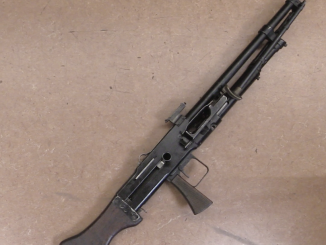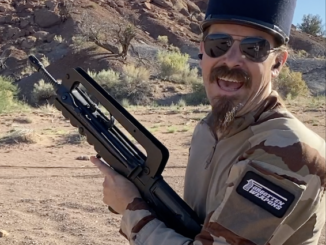For the full episode with the hand loading instructional section, click here:
https://forgottenweapons.vhx.tv/videos/black-powder-episode-2-gras-app-cut
Black powder military rifles of the 1860s-1880s are a really enjoyable group of guns. A lot of them are relatively reasonably priced, and they are actually pretty easy to reload for. The unavailability of factory ammunition (for most, although not so much for the Trapdoor) makes them seem like a daunting prospect, but for a pretty simple investment in tools and time one can make up ammunition and have a lot of fun with rifles like this.
That’s the idea behind a new series here on black powder military rifles. Each moth, my friend – and handloader – Tom and I will take out a different model to have some fun at the range and compare how they handle. And then we will show you how to make the ammunition for them. So grab your pith helmet, pause “Zulu” and join us! Today is Episode One: Trapdoor Springfield!




Having a trapdoor Springfield (w/pokey thing) and a Gras (w/pokey thing) this series has been great motivation and virtual gratification.
I do question the black v smokeless, push v smack thing a little…a hot load of .45 sabot in a modern (light) .50 BP hunting rifle won’t leave bruises but one does have to be ready for it.
I liked the background uproar. Prussian artillery? Je m’en fiche! En avant! On les auras!
In England, Kynoch, (better known for their ammunition), converted Chassepot rifles to metallic cartridge at their Aston factory. These rifles still have the original French proof marks but are stamped ‘Kynoch Gun Factory – Aston’, with ‘Kynoch’s Patent’ on the receiver. The calibre is shown as ‘Musket – 43 – 77 – 330’, so a .43 330 grain bullet with 77 grains of black powder.